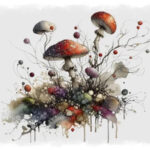The profusion of literature festivals in India has spawned another phenomenon- the production of the man of culture. The production of such neo-liberal subjectivity occurs in conjunction with rejection by psychoanalysts. There have been instances of patients from disadvantaged backgrounds who suddenly face rejection while in therapy with acclaimed psychotherapists. In such cases, the therapist simply stops responding to requests. More `humanitarian’ therapists respond with negative comments and unwillingness to accept any more requests. The work of psychotherapy equally belongs to the patient as it does to the therapist. But, not unlike fancy canines left to fend for themselves in the bylanes, erstwhile `analysands’ find themselves on various cultural fora, trying to seek emotional succour.
`The man of culture’ inevitably has been a gendered creation. Sanjoy Roy of JLF and K.Satchidanandan of the Kerala Literature Festival provide archetypical templates. But unlike these individuals who have succeeded in their literary, cultural entrepreneurship, and as a writer of global repute in the case of K.Satchidanandan, the neo-liberal man of culture is left to languish in the outback of academia or the knowledge/cultural ecosystem. Misogynist cribbing over salon culture and toxic masculine channels of tarnishing reputations are then activated to subdue perceived foes. In this era of cultural shadow boxing in India, not even a George Sand or an Ottoline Morrell could have survived.
DETRITUS OF THE POETIC SALON
The sophisticated male poet manque of Delhi University is a product of caste, and cultural privilege (accompanied in cases with oodles of talent) who dallies between the left and the centre right and typically reads the collected letters of TS Eliot from Sahitya Akademi. Sartorial tastefulness, social media political correctness, networking in the right circles and aeons of midnight oil later, the smithy of the upper caste literary culture industry produces not the writer of yore, but the cultural entrepreneur. a) The novice cultural entrepreneur starts Whatsapp groups and adds quasi-celebrity friends (the cult of the genius having been replaced by that of the celebrity) who publish in online journals and poetry magazines and submit to `Paris Review’ over snail mail. b)The` associate level’ cultural entrepreneur starts networking in the workplace. Usually, the academia, hobnobbing with better known writers or other `men of culture’. People working in the Humanities and Social Science Departments are sitting ducks for such poaching as well as predation. c)The advanced level cultural entrepreneur develops political ambitions to design and manipulate society and uses new media platforms with deftness. They become power figures with an exaggerated sense of themselves. d)The consummate cultural entrepreneur goes global. Thus cultural entrepreneurship becomes a caste in itself.
The trauma at the heart of the production of the literary man of letters is produced by the very discourse that purports to heal that trauma. Psychotherapy and its irony of transference become doubly so in the Indic urban milieu when coupled with the pervasiveness of caste as an all-encompassing ether. The rejection that the analysand feels post-transference, is couched in the vocabulary of caste superiority/inferiority (the annual Freud conference in Delhi was once witness to a caste therapist from the USA describing the traumatising encounter he had with a black American patient, which could be withstood only by invoking a mythical Indic demon! Some kind of judgementally superior meta-ethical framework was being sought here as well as elsewhere). In non-metropolitan locales with an advanced level of emotional awareness, the psychotherapeutic edifice is invariably under the control of elites who are often in alliance with a right-wing ecosystem of counselling, non-folk traditional and modern healing and therapy. In such locations, culture is usually held to be synonymous with upper-caste rituals.
ACADEMIC RITUAL AS SECULARISATION OF UPPER CASTE RITUAL
Ritual in the contemporary ontological firmament has been objectified. This calcification of religious ritual, of its subjective valences, can result in psychological trauma for practitioners and the audience/aficionados. For example, the performing temple ritual `Patayani’ in Kerala has faced a backlash for using electrical lighting, instead of the traditional oil lamps that are lighted in the nocturnal darkness when the ritual performance is normally held.
Marxism was once used to tame the supposed grotesquery/potency of religious ritual by valorising it as culture. Thus Theyyam, Thira, Bhoota Kola and such performing art forms have acquired progressive and regressive valences. The cinema industry performs a disservice by alienating them from their foundational values as in films like `Kantara’.
What has been exorcised from this traditional, ritualistic therapeutic milieu is the `man of culture’ who suffers the most from the exorcism of the Indic caste meaning of the ritual, which has been appropriated by the academia.
Psychoanalysis and Freudian psychodynamic psychotherapy are heavily inflected by modernist art movements like surrealism and expressionism. The case of a mistaken modernism (as well as modernity) could be the reason for an artistic vacuum at the centre of the hectic literary activity surrounding literature festivals in present day India. Frenetic ambition and activity of the emerging classes (infamously characterised by an MP as `headless chickens) reveal an unwillingness to confront reality. The reality of an artistic vacuum fuels frenetic activity on the part of the erstwhile caretakers of society who have an inkling that culture holds the key but are totally clueless on the torsions and trajectories of neo-liberal capital in a globalising world. The fountains of stream of consciousness and modernism run dry on the barren sands of caste hierarchy.



